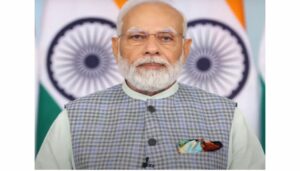Economic Survey Points Towards Positive Growth: Dr Niranjan Hiranandani – National President, NAREDCO and Sr VP – Assocham

5 July 2019 : Mumbai, Maharashtra, New Delhi, Delhi, India
A day before #Modi government’s second term first budget, Finance Minister #NirmalaSitharaman tabled the Economic Survey 2018-19, prepared by Chief Economic Adviser Krishnamurthy Subramanian, in the Parliament.
A day before #Modi government’s second term first budget, Finance Minister #NirmalaSitharaman tabled the Economic Survey 2018-19, prepared by Chief Economic Adviser Krishnamurthy Subramanian, in the Parliament. The Economic Survey projects the state of health of the Indian economy and outlines the challenges.
The report projected #GDP growth rate at 7 per cent for the financial year 2019 – 2020, up from the 6.8 per cent last year. This is an affirmation of the continued joint efforts taken by government and India Inc to help India regain the status of world’s fastest-growing economy. To become a $5 trillion #economy by FY25, India will have to grow at 8 per cent per year and investment is the “key driver” of simultaneous growth in demand #jobs #exports & #productivity.
The GDP growth has been seen picking up on higher private investment and robust consumption. Growth in the GDP is expected to pick up in 2019-20 as macroeconomic conditions continue to remain stable while the reforms initiated in the government over the years are continuing on course. A stable government at the centre also aids a pickup in demand and supply in the economy. The real GDP growth projection reflects a recovery in the economy after a deceleration in the growth momentum during 2018-19.
According to the report, #MSMEs need to be seen as a source of innovation, growth and job creation. These sectors play a key role in employment generation and contribute highly to the GDP. To step-up the impact of economy growth on employment, the focus has to be on high employment elastic sectors. These sectors must be made free from the shackles that convert them into dwarfs (dwarf firms—with less than 100 employees but more than 10 years old) to can grow to become large firms as they age, have high productivity and higher value added in manufacturing.
This shows the intent and commitment of the government in the key growth areas. The survey affirms that investments would be a key driver with micro, small and medium term business being the key focus area.
The liquidity situation which continues to worry the industry has been categorically mentioned in the survey as well. The Finance Ministry had said that liquidity has remained systematically tight since September last year, which has impacted yields. IL&FS default was a big shock to investors in debt mutual funds, leading to the NBFC crisis which impacted the lending capability of the sector in recent quarters.
While stating the need and importance of a healthy non-banking financial sector, the survey stated that, “Non-Banking Financial Companies (NBFCs) bring in diversity and efficiency to the financial sector and makes it more responsive to the needs of the customers. In the recent past, the NBFCs have played increasingly important role in resource mobilization and credit intermediation, thereby helping commercial sector to make up for low bank credit growth.”
The industry also expects that several positive factors like the stable government, declining oil prices and GST buoyancy in FY20 key to improved fiscal situation further.








